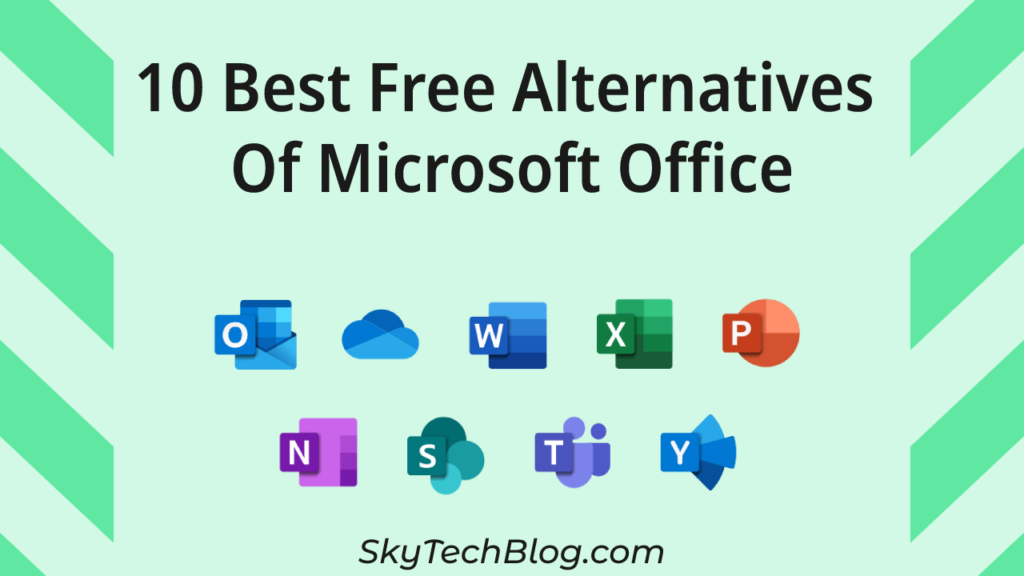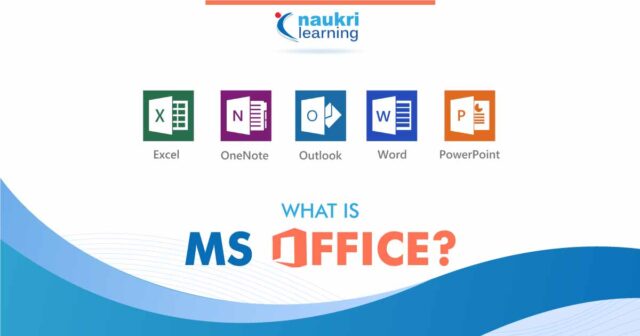Microsoft Office, a suite of productivity software, has been designed to cater to the diverse needs of businesses, educational institutions, and individual users. Released by Microsoft Corporation, it has become one of the most widely utilized software packages globally. The suite includes applications such as Word, Excel, PowerPoint, Outlook, Access, and OneNote, each serving a specific purpose to enhance productivity and efficiency.
What is Microsoft Office?
Microsoft Office, commonly referred to as MS Office, comprises various applications that facilitate document creation, data management, presentations, communication, and more. The core applications are:
- Microsoft Word: Used for word processing, allowing users to create, edit, and format documents.
- Microsoft Excel: A spreadsheet application designed for data analysis and visualization.
- Microsoft PowerPoint: Utilized for creating and delivering presentations.
- Microsoft Outlook: An email client that also includes calendar, task manager, and contact management features.
- Microsoft Access: A database management system for storing, retrieving, and managing data.
- Microsoft OneNote: A digital notebook for note-taking and organization.
How to Use Microsoft Office
To utilize Microsoft Office, the following steps should be followed:
- Installation and Setup: Microsoft Office must first be installed on a computer or accessed via a subscription to Microsoft 365, which offers cloud-based versions of the applications. Installation involves downloading the software from the official Microsoft website or inserting an installation disk, followed by following the on-screen instructions.
- Launching Applications: Once installed, the applications can be launched from the Start menu or desktop shortcuts. Each application can be opened individually, depending on the task at hand.
- Creating and Managing Documents:
- Microsoft Word: New documents can be created by clicking on ‘New Document.’ Templates are available for various document types. Features such as text formatting, inserting images, tables, and charts, and utilizing proofreading tools are readily accessible.
- Microsoft Excel: New spreadsheets can be started by selecting ‘New Workbook.’ Data can be entered into cells, and functions and formulas can be applied for calculations. Charts and graphs can be created for data visualization.
- Microsoft PowerPoint: New presentations can be started by choosing ‘New Presentation.’ Slides can be designed using various layouts, and multimedia elements like images, videos, and animations can be added.
- Saving and Sharing: Documents can be saved locally on the computer or in the cloud via OneDrive. Sharing options include emailing documents directly from the application or sharing links for collaborative work in real-time.
- Customization and Advanced Features: Users can customize their workspace by adjusting settings and preferences. Advanced features such as mail merge in Word, pivot tables in Excel, and slide transitions in PowerPoint enhance functionality.
Pros of Microsoft Office
- User-Friendly Interface: The interface of MS Office applications is intuitive, making it easy for users of all skill levels to navigate and utilize the tools.
- Integration and Compatibility: Seamless integration between applications allows for easy data sharing and compatibility across different platforms and devices.
- Versatility: The wide range of applications caters to various tasks, from simple document creation to complex data analysis and professional presentations.
- Collaboration Tools: Features such as real-time collaboration, track changes, and comments facilitate teamwork and communication.
- Regular Updates and Support: Microsoft provides regular updates, ensuring that the software remains secure and up-to-date with the latest features. Customer support is readily available for troubleshooting.
- Cloud-Based Accessibility: With Microsoft 365, documents can be accessed and edited from anywhere with an internet connection, enhancing flexibility and convenience.
Cons of Microsoft Office
- Cost: MS Office can be expensive, with one-time purchase prices or ongoing subscription fees, which may be prohibitive for some users.
- Complexity for Beginners: While powerful, the wide array of features can be overwhelming for beginners, requiring time and effort to learn.
- System Requirements: The software requires substantial system resources, and older computers may struggle with performance issues.
- Compatibility Issues: Despite widespread use, compatibility issues may arise when sharing documents with users of different or older software versions.
- Dependence on Internet for Cloud Features: For those using Microsoft 365, a stable internet connection is necessary to access cloud-based features and collaborate in real-time.
- Privacy Concerns: Storing documents in the cloud may raise privacy and security concerns for some users, particularly with sensitive information.
Top 10 MS Office Alternatives

The dominance of Microsoft Office in the realm of productivity software is well-known. However, various alternatives have been developed, offering similar functionality, often at a lower cost or even for free. This log will discuss ten notable alternatives to MS Office, highlighting their features and benefits.
1. Google Workspace
Google Workspace, formerly known as G Suite, is widely recognized as a robust alternative to MS Office. Provided as a cloud-based service, it includes applications such as Google Docs, Sheets, Slides, and more. Collaboration is facilitated in real-time, making it suitable for teams and remote work. The ease of access from any device with internet connectivity is appreciated by many users.
2. LibreOffice
LibreOffice is an open-source suite that has gained popularity due to its comprehensive range of tools. Comprising Writer, Calc, Impress, Draw, Base, and Math, it offers similar functionality to MS Office. It is favored for its support of various file formats, including those used by Microsoft. Regular updates and a strong community support system enhance its reliability.
3. Apple iWork
For macOS and iOS users, Apple iWork serves as a viable alternative. It includes Pages, Numbers, and Keynote, which are used for word processing, spreadsheet management, and presentations, respectively. The integration with iCloud allows seamless syncing across Apple devices. The user-friendly interface and rich templates are appreciated by users.
4. WPS Office
WPS Office, developed by Kingsoft, is another alternative that mimics the look and feel of MS Office. It includes Writer, Spreadsheets, and Presentation. A unique feature is its tabbed interface, which allows multiple documents to be opened in a single window. The software is available for free, with a premium version offering additional features.
5. Zoho Office Suite
The Zoho Office Suite is a comprehensive cloud-based suite that includes Zoho Writer, Sheet, Show, and other applications. Designed for collaboration, it offers integration with various Zoho and third-party apps. Customization options and an affordable pricing model make it an attractive choice for businesses and individuals alike.
6. OnlyOffice
OnlyOffice is a versatile office suite that supports document, spreadsheet, and presentation management. It is offered as both a cloud-based and on-premises solution. Integration with popular cloud storage services and a focus on collaborative editing are among its notable features. The open-source community edition is appreciated for its flexibility and cost-effectiveness.
7. FreeOffice
Developed by SoftMaker, FreeOffice is designed to provide compatibility with MS Office formats. It includes TextMaker, PlanMaker, and Presentations. The user interface is highly customizable, offering both modern and classic menu styles. The software is available for free, with a premium version unlocking additional features and functionality.
8. Polaris Office
Polaris Office is a cloud-based suite that supports various document formats, including those of MS Office. It includes applications for word processing, spreadsheets, presentations, and PDFs. Cross-platform support allows access from different devices, and the real-time collaboration feature enhances team productivity. An ad-supported free version is available, with premium plans offering more features.
9. Calligra Suite
Calligra Suite, part of the KDE community, is an open-source suite that includes applications for word processing (Words), spreadsheets (Sheets), presentations (Stage), and more. It is appreciated for its modular design and integration with other KDE applications. Regular updates and a focus on community feedback contribute to its development.
10. Apache OpenOffice
Apache OpenOffice, a long-standing open-source alternative, includes Writer, Calc, Impress, Draw, Base, and Math. Its similarity to LibreOffice is noted, though it follows a different development path. Compatibility with MS Office formats and an extensive range of features are among its strengths. The active community and regular updates ensure continued improvements and support.
Conclusion
Microsoft Office remains a cornerstone of productivity software, widely recognized for its robust features and ease of use. Its applications serve a broad spectrum of tasks, making it an indispensable tool for professionals, students, and individuals alike. While there are some drawbacks, such as cost and complexity, the benefits far outweigh the disadvantages. Regular updates, user-friendly interfaces, and powerful integration capabilities ensure that MS Office continues to be a preferred choice for many.
The use of MS Office has significantly transformed how work is conducted, enabling efficient document management, data analysis, and effective communication. As technology evolves, Microsoft Office is expected to continue adapting, offering innovative solutions to meet the ever-changing needs of its users.










